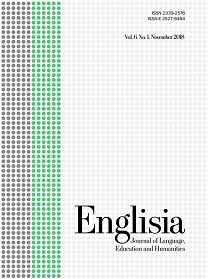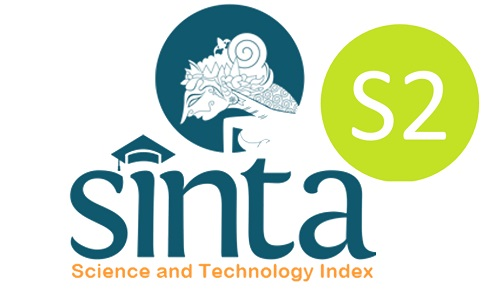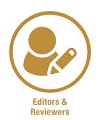A REVIEW OF THE DEPARTMENT OF ENGLISH LANGUAGE EDUCATION CURRICULUM DEVELOPMENT
DOI:
https://doi.org/10.22373/ej.v6i1.3529Keywords:
curriculum, curriculum development, English language teacher education, higher educationAbstract
A review of the current literature on curriculum development elucidates that much of the existing work either: (i) focuses on the development of educational resources; (ii) rectifies the concept of curriculum; (iii) or identifies desirable features of development methods without providing any practical guidance that synchronizes the needs of any particular education systems and geographical status where students are living. This paper scrutinizes the development of the Department of English Language Education curriculum of Ar-Raniry State Islamic University (Universitas Islam Negeri Ar-Raniry Banda Aceh) Indonesia in line with Aceh context. It is flexible and evolutionary, and is soundly underpinned by proven theory and practices from contemporary curriculum development concepts. Systematically this article explores three pivotal aspects: educational foundation in Aceh, curriculum development in Indonesia, and an ideal curriculum of the Department of English Language Education, particularly in Aceh context.
Downloads
References
Aspinal, E. (2005). The Helsinki agreement: A more promising basis for peace in Aceh? Policy Studies, 20, 32-43.
Barnett, R. (1994). The limits of competence. Buckingham: Open University Press.
Barnett, R, & Coate, K. (2005). Engaging the curriculum in higher education. Maidenhead (England): Open University Press.
Biggs, J., & Tang, C. (2007). Teaching for quality learning at university (3rd ed.). New York: McGraw-Hill.
Bjork, C. (2006). Decentralisation in education, institutional culture and teacher autonomy in Indonesia. In J. Zajda (Ed.), Decentralization and Privatization in Education: The role of the state. Dordrecht: Springer.
Dickson, C.A.W. (2010). Evaluating the student experience of inquiry-based learning: An educational initiative. Practice and Evidence of Scholarship of Teaching and Learning in Higher Education, 5(1), 33-45.
Habiburrahim, H., Orrell, J., & Conway, R. (2016). Integrating Graduate Attributes Into Islamic Higher Education Curricula in Aceh, Indonesia. In J. Orrell & D. D. Curtis (Eds.), Publishing Higher Degree Research (pp. 145-154). SensePublishers, Rotterdam.
Habiburrahim, H. (2017). Developing an English Education Department Curriculum. Jurnal Ilmiah Peuradeun, 5(1), 1-14.
Hashim, C.N., & Langgulung. H. (2008). Islamic religious curriculum in Muslim countries: The experiences of Indonesia and Malaysia. Bulletin of Education & Research, 30(1).
Jongbloed, B., Enders, J., & Salerno. C. (2008). Higher education and its communities: Interconnections, interdependencies and a research agenda. Higher Education 56(3).
Kopong, E. (1995). Informal learning: A case study of local curriculum in Indonesia. Prospects, 25(4), 639-651.
Kupperschmidt, B.R., & Burns, P. (1997). Curriculum revision isn’t just change: it’s transition. Journal of Professional Nursing, 13(2), 90-98.
Kwan, A. (2009). Problem-based learning. In M. Tight, K.H. Mok, J. Huisman & C.C. Morphey (Eds.). The Routledge international handbook of higher education, New York: Routledge.
Magloire, J. (2010). Integrating general education into a communication curriculum: The bigger picture question. Practice and Evidence of Scholarship of Teaching and Learning in Higher Education, 5(1).
McFadden, J.R., & Roehrig, G.H. (2017). Exploring teacher design team endeavors while creating an elementary-focused STEM-integrated curriculum. International Journal of STEM Education 4(21) DOI 10.1186/s40594-017-0084-1.
NAD strategic planning 2007 — 2011. (2007). Education policy, strategy and financing framework.
Nicholls, D. (1995). A straw thrown up to show which way the wind blows. Higher Education Academic Journal Capability, 1(4), 41-48.
Panduan Akademik Universitas Islam Negeri Ar-Raniry [Academic Handbook of Ar-Raniry State Islamic University]. (2016). Banda Aceh: Universitas Islam Negeri Ar-Raniry.
Qanun Aceh No. 5 (2008) on the implementation of education.
Qanun Aceh No. 23. (2002) on the implementation of education.
Ramsden, P. (2003). Learning to teach in higher education (2nd ed.). Oxon: RoutledgeFalmer.
Rowland, S. (2006). The enquiring university: Compliance and contestation in higher education. New York: Open University Press.
Stein, S. J., & Walker. R. (2010). Tertiary teachers learning about teaching: Integrating theoretical and practical knowledge. Practice and Evidence of Scholarship of Teaching and Learning in Higher Education, 5(1), 2-22.
Tilaar, T. A. M. (2002). Peran perguruan tinggi di daerah dalam otonomi daerah. In I. Syarief & D. Murtadlo (Eds.). Pendidikan untuk masyarakat Indonesia baru. Jakarta: Grasindo.
Undang-Undang Pemerintah Aceh (UUPA) (2006), Law No. 11 of 2006 on the Aceh government.
Zeszotarski, P. (1999). Dimension of general education requirements. New Directions for Community Colleges, (108), 39-48.
Downloads
Published
Issue
Section
License
Proposed Policy for Journals That Offer Open Access
Authors who publish with Englisia journal agree to the following terms:
- Authors retain copyright and grant the journal right of first publication with the work simultaneously licensed under a Creative Commons Attribution License that allows others to share the work with an acknowledgement of the work's authorship and initial publication in this journal.
- Authors are able to enter into separate, additional contractual arrangements for the non-exclusive distribution of the journal's published version of the work (e.g., post it to an institutional repository or publish it in a book), with an acknowledgement of its initial publication in this journal.
- Authors are permitted and encouraged to post their work online (e.g., in institutional repositories or on their website) prior to and during the submission process, as it can lead to productive exchanges, as well as earlier and greater citation of published work (See The Effect of Open Access).









